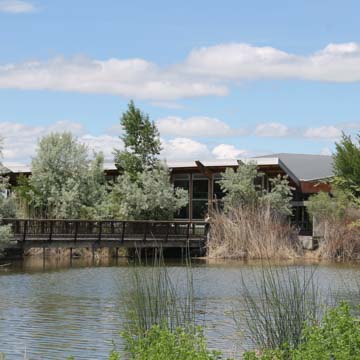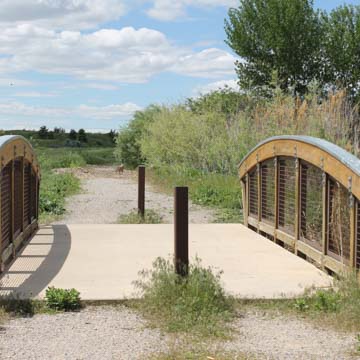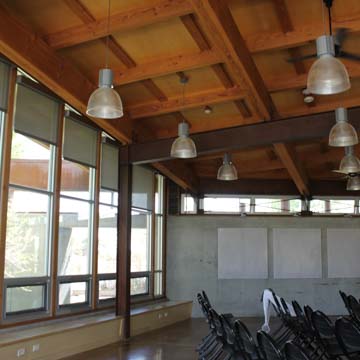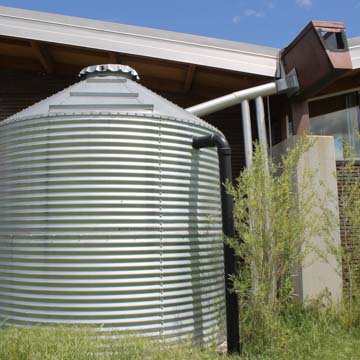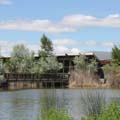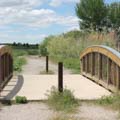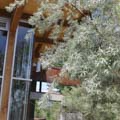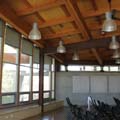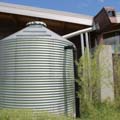Utah’s semi-arid climate makes understanding the state’s wetlands and water ecology especially important. The Great Salt Lake Ecosystem includes 75 percent of Utah’s wetlands, totaling about 400,000 acres and comprising fresh and salt water wetlands, open water and mudflats that are vital for migrating birds, and a wealth of other fauna. Utah State University Botanical Center’s Wetland Discovery Point is the core of a facility that resulted from a 1995 study by the Utah Reclamation Mitigation and Conservation Commission, which found a significant gap in the public understanding of Utah’s wetlands. Construction was financed by the Commission in conjunction with Utah State University, with substantial assistance from the American Recovery and Reinvestment Act (ARRA) of 2009. The building was the first in Utah to receive LEED-Platinum certification.
The 3,200-square-foot structure consists of a roughly L-shaped plan, with two rectangular wings that meet at the tapering foyer of the main entrance. The building’s roof slopes inward to gather rainfall that is collected in a large cistern at the western end. Rafter tails extend several feet beyond the wall on the north and south facades, which are both extensively glazed, as is the eastern elevation.
The approach to the building seems almost unplanned in that one may approach it from several directions. A meandering dirt path from the parking lot unexpectedly merges into a concrete walk. This turns out to be a formal axis that crosses a bridge to reach the building, piercing a corner that has been purposefully extended to meet it. The axis continues out the other side and across another bridge, providing a similar experience for those approaching from the opposite direction. Since its completion, the designed landscape of native vegetation has grown so that the building is now partially or completely screened from almost every direction; viewed from across the pond, the building is almost invisible.
As an institution dedicated to education, Wetlands Discovery Point is designed for the interpretation and understanding of nature. Unlike the Antelope Island Visitor Center, Wetland Discovery Point draws neither its formal nor material inspiration from its site. Its ambition seems to be to disappear. Its relationship with nature, apart from its location, lies chiefly in the effort invested in making its environmental footprint as light as possible. In addition to harvesting rainwater, the building incorporates geothermal heating and cooling, a Trombe wall for passive solar heating and cooling, photovoltaics, solar hot water heating, wood reclaimed from railroad trestles, and several other sustainable features. All of this is laudable, of course, as it would be in any building. It acquires critical weight, however, in a building intended to educate people about our relationship with nature.

